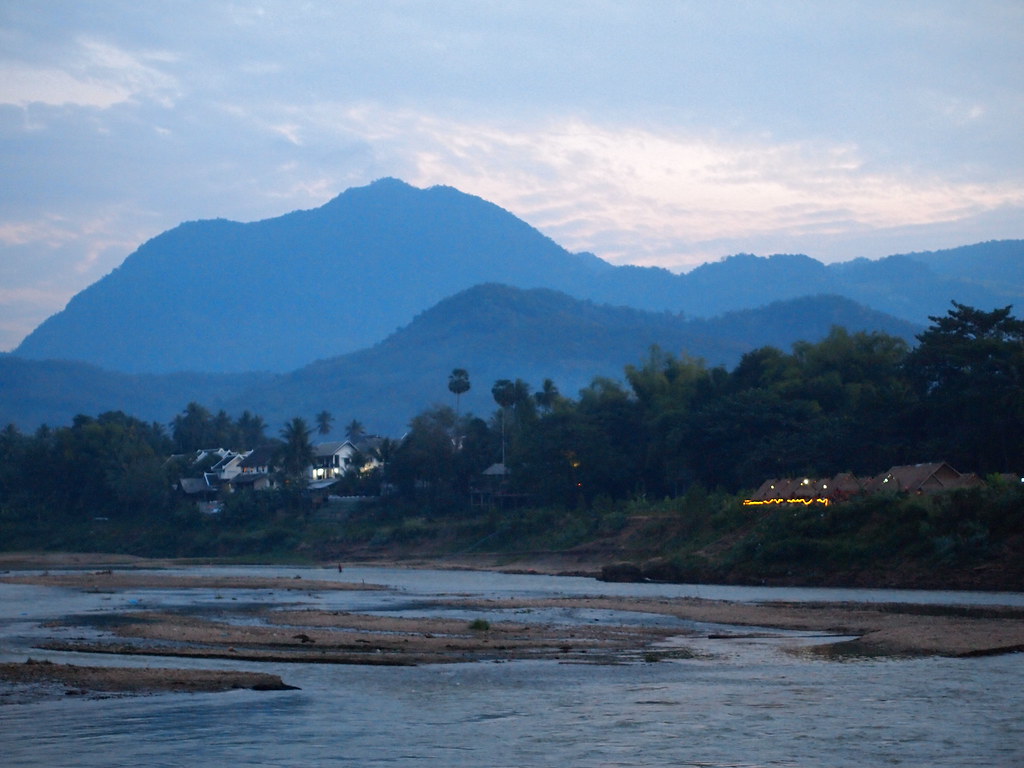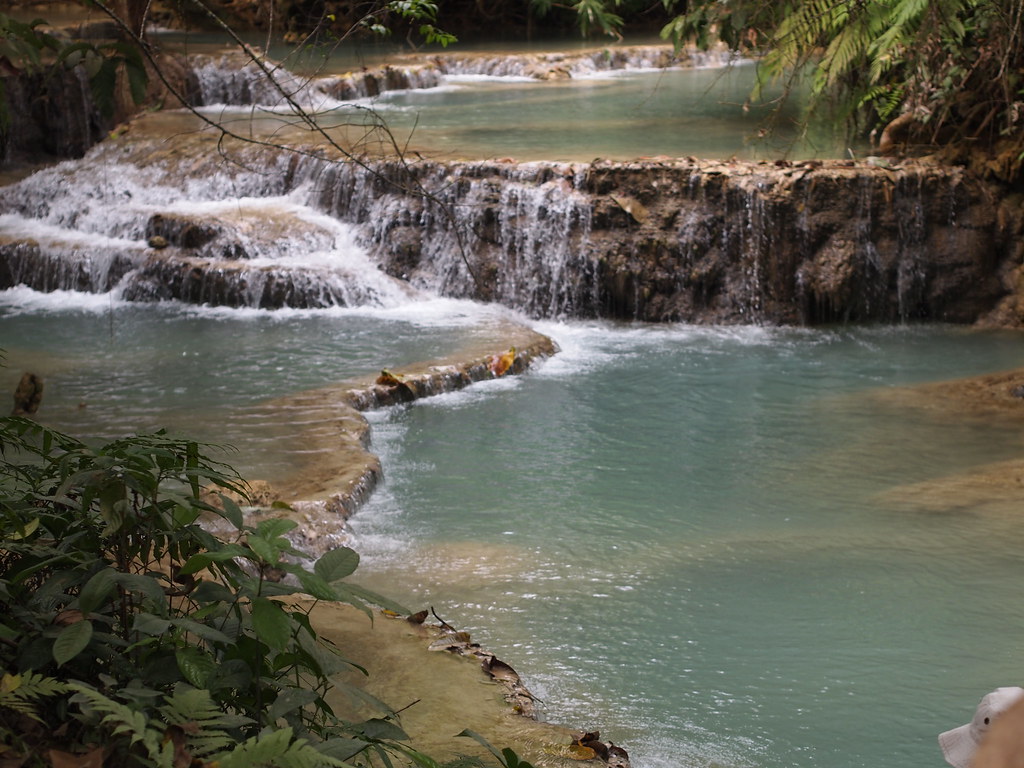Alluring Laos: Luang Prabang and Vientiane
Laos is a compelling place — a country with gorgeous scenery, gentle people, exotic allure, rampant poverty, and a mysterious history.
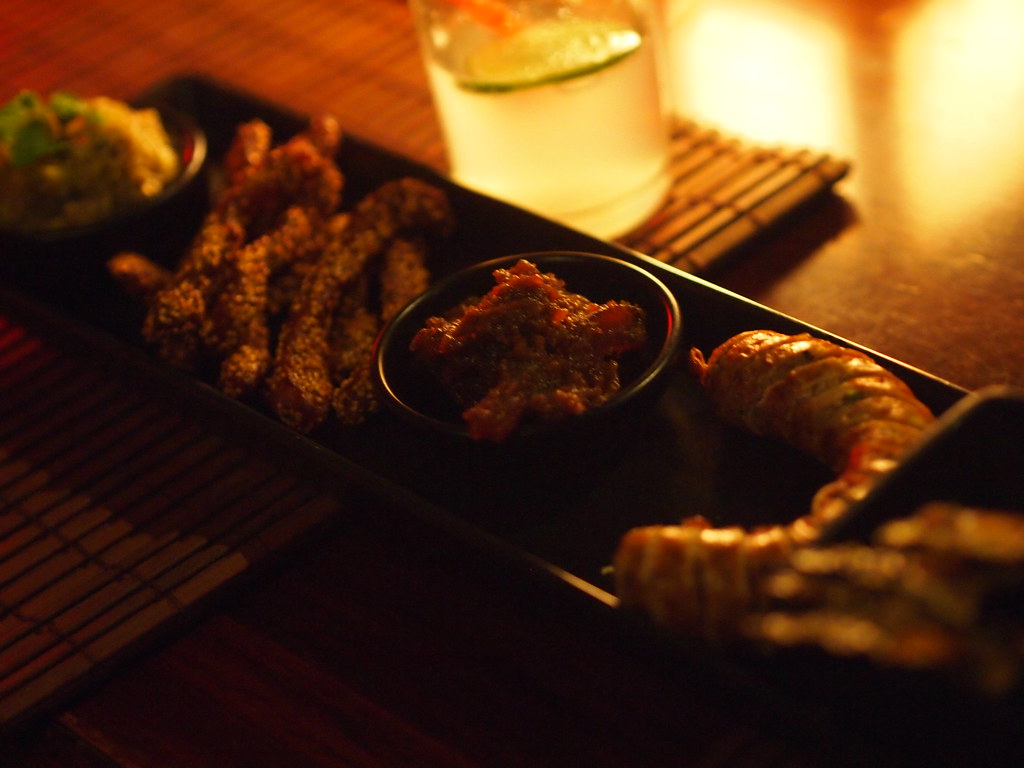
We spent most of our time here in the cities of Luang Prabang and Vientiane. Both bearing a heavy French footprint and knotted together by the heart string of the Mekong River, these are the two principal cities in a primarily poor and rural land. (Laos’ GDP per capita is an anemic $3,000 per person, ranking somewhere between Ghana and Pakistan.)
Vientiane is the capital, an awkward mix of wide French boulevards, Soviet cinderblock buildings, and Indochinese markets wreathed in oilcloth tarps and charcoal smoke.
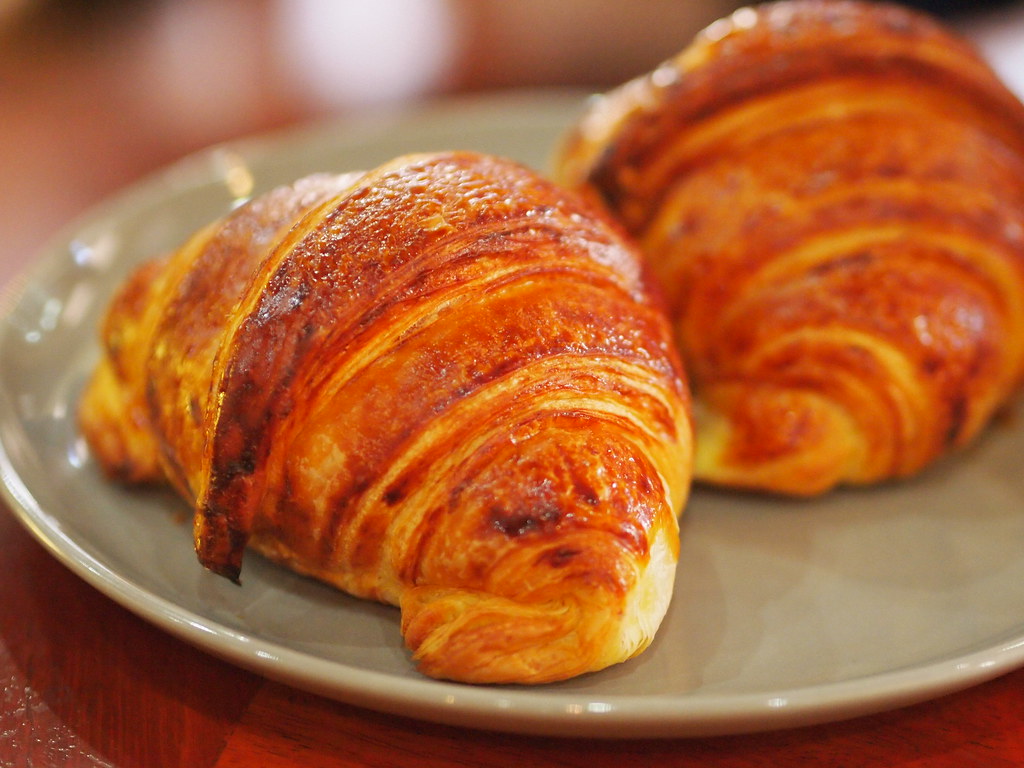
There are temples here, massage parlors and museums. Maybe we’ve reached full wat-tage (probably), but we spent most of our time here catching up on our reading. We grabbed some local beers and watched the sun sink below the Mekong, not in a green flash, but with an asthmatic cough beneath a thick layer of smog.

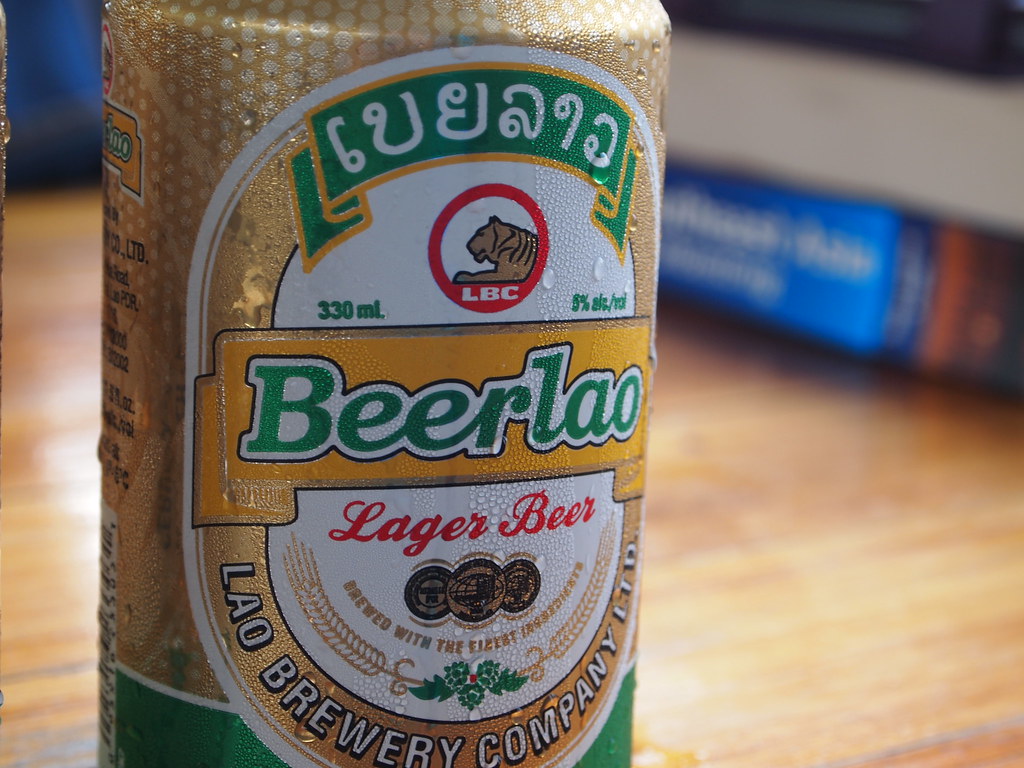
Probably our most humbling and distressing stop was at the Cope Center, a nonprofit organization dedicated to assisting victims of the UXO (unexplored ordinance) left over from decades of warfare.
Here are some pretty shocking stats from the Cope Center: Per capita, Laos is the most heavily bombed country in history. From 1964 to 1973, the U.S. dropped more than two million tons of ordnance on Laos during 580,000 bombing missions—equal to a planeload of bombs every 8 minutes, 24-hours a day, for 9 years. Up to 30% of that ordnance failed to detonate, and the bombs that litter the Lao countryside have killed or injured 50,000 people since 1964. As we understand it, the bombings were part of the U.S. Secret War in Laos to support anti-Communist factions against the Pathet Lao and to interdict traffic along the Ho Chi Minh Trail. If, like us, you were completely ignorant that this ever happened, you can read more about the Secret War here and here. COPE does good work raising awareness and manufacturing high quality prosthetic limbs for victims of UXO. It’s worthwhile to visit their website (donations welcome — it only costs an arm or a leg).
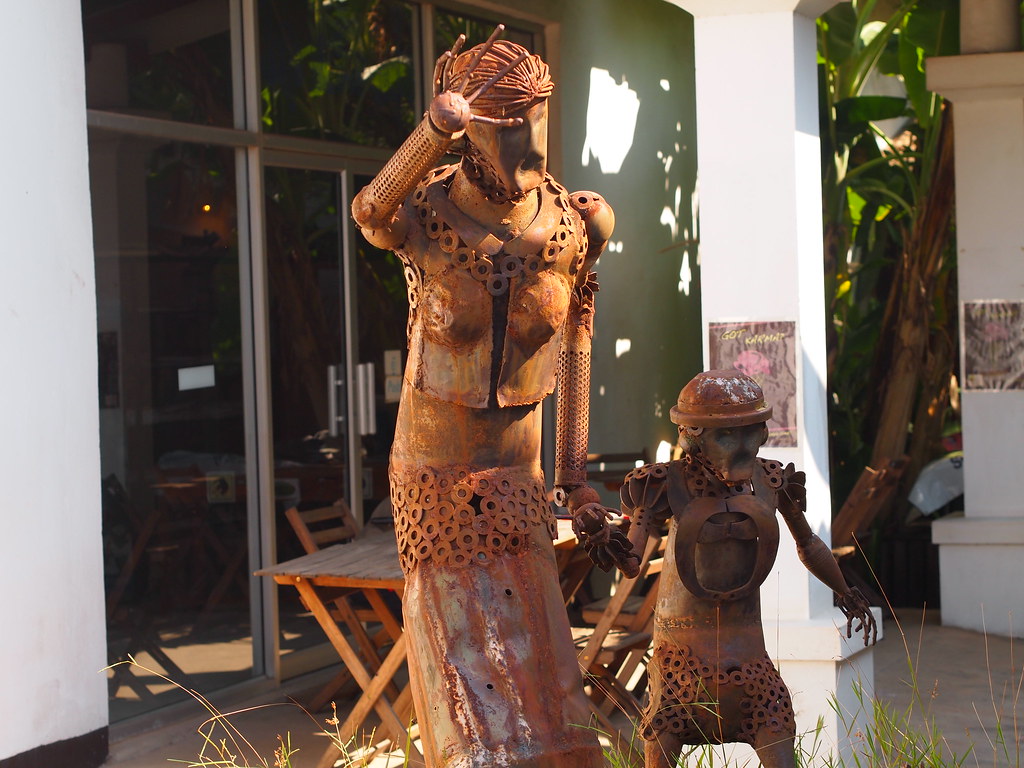
Farther north, Luang Prabang is the resort town of Laos, picturesquely set on a little tongue of land at the confluence of the Mekong and Nam Khan rivers. Protected since 1995 by a Unesco World Heritage site stamp, the skyline is punctuated by temple spires, its French colonial architecture still largely intact and reborn as pricey guest houses.
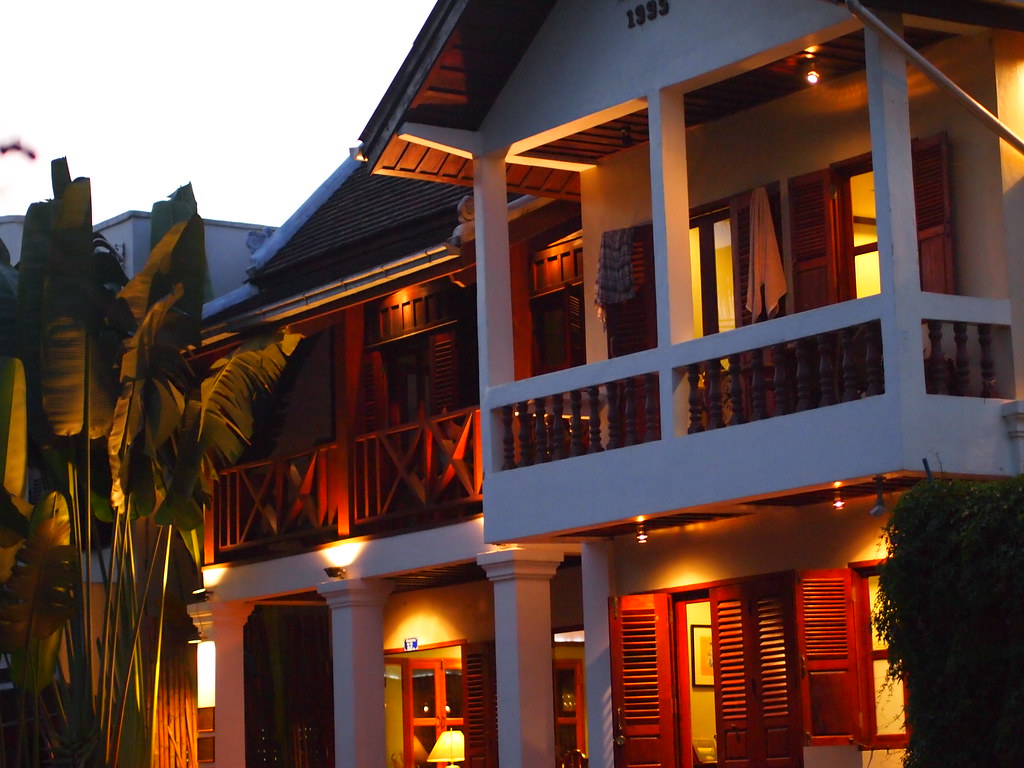
It is beautiful, dreamy and charming. And despite how difficult it is to reach, this place has become very well known. Luang Prabang is a darling of Southeast Asian tourism, with tour guides pronouncing it a “dreamland” or “Shangri-La.” We’re a bit less romantic. We pronounced it the Lao version of St. Augustine, Florida. A beautiful old town with an interesting history and, for these reasons, heavily touristed.
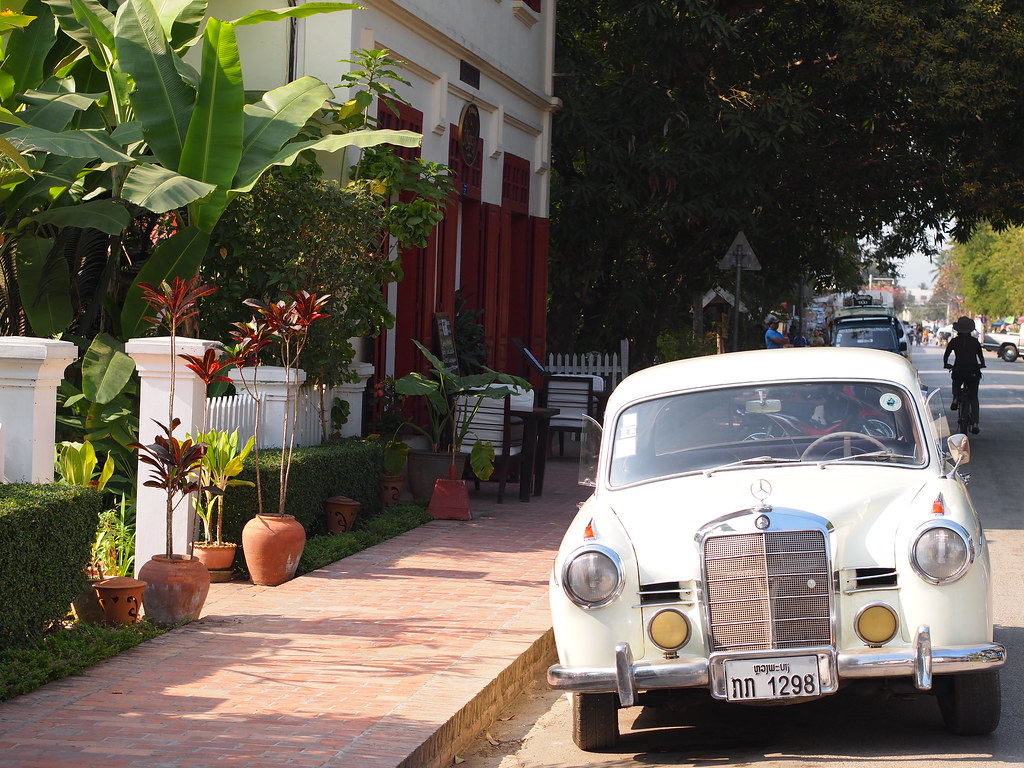
We spent our days here mostly reading in the numerous cafes, drinking delicious Lao coffee and tea, and watching the river go by. For people with more ambition, it’s easy to arrange trekking trips from Luang Prabang. We did manage to make it to the beautiful, menthol-hued Kuang Si waterfalls.
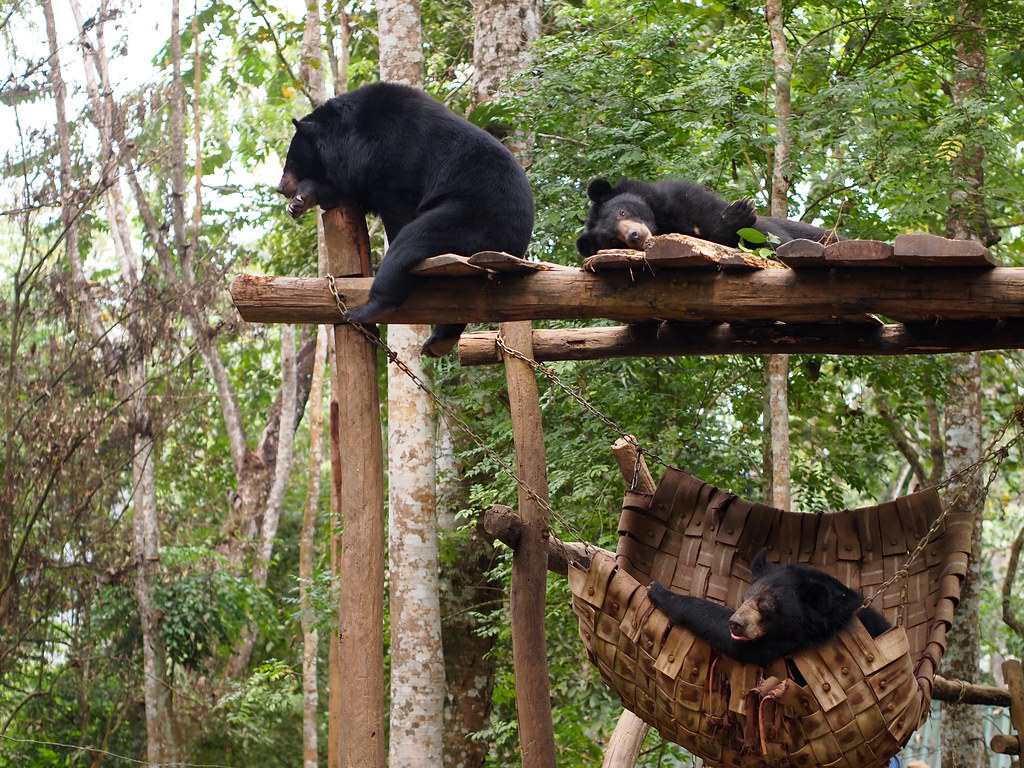
We also found the local library, which collects childrens books and sends them by boat to rural villages in Laos, many of which have no books, no schools, or neither.
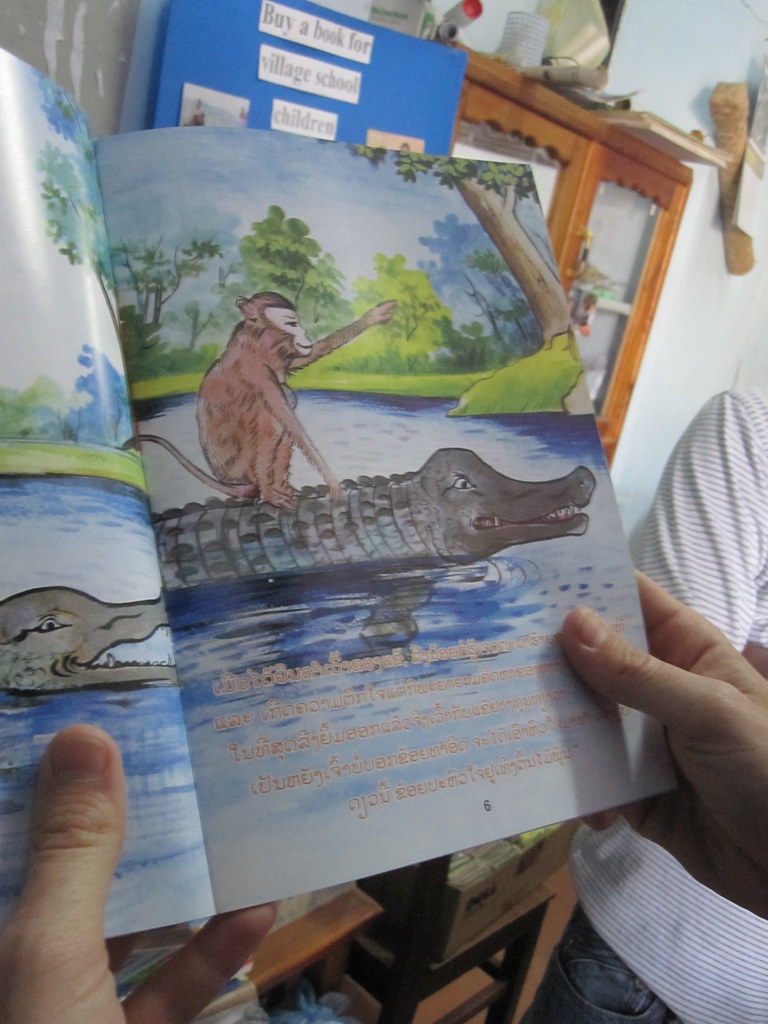
The alms procession is an age-old daily ritual in Luang Prabang. At sunrise, the monks and novices from the city’s many temples will walk the main boulevard and collect their daily ration of rice and other food. What they collect is what they eat for the day. I had heard of this, and imagined a quiet daybreak, with saffron-clad monks emerging out of the morning mist with their alms bowl in hand.
They were there, and the procession was beautiful, but the reality was so different. We arrived to find the road crammed with tour buses, tour operators squawking in various languages, and people crowding right into the monks’ line to take multiple flash photographs. People were pushing for a superior camera shot, climbing temple walls to get a better angle and having loud, vulgar arguments. It was a circus. We were tourists there, too, and even though we stayed a respectful distance away, I was ashamed. Like we had killed something innocent and delicate, stomped on the first blooms of spring. It speaks to the best and worst of Laos: it’s gentle traditions, it’s poverty, and it’s fragility.

